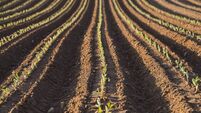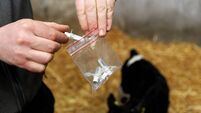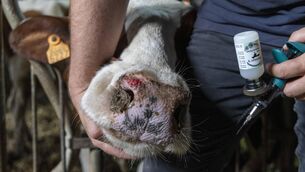‘Maximum return, minimum risk’ is best investment policy

As farmers, we all have investment choices. With tightening margins, those investment choices become more difficult, due to tighter cash flow. So, consider your budget, the return on your investment, and how long the investment will deliver returns.
In the financial world, investors maximise return while minimising risk. Us farmers should do business in the same way. A simple example: should I invest in new machinery or should I invest in soil fertility?
The good news is that data can be gleaned from publicly available sources, such as Teagasc, so we can make informed decisions. A decision is informed when details of the cost and outcome are readily known.
Along with the investment terms above, another term in investment appraisal is ‘payback’.
Payback defines how long it will take any investment to pay for itself.
Some investments will pay for themselves quite quickly: for instance, reseeding stale pasture can pay for itself within 18 to 24 months, and the reseeded pasture can continue delivering superior productivity for a long number of years thereafter.
In contrast with the financial world, it is rare in commerce for financial investments to deliver such high returns. Reseeding costs in the region of €250 per acre, so for a relatively small outlay a farmer can expect a good boost to productivity over the medium term.
Gains are said to come from increased grass yield, better response to nitrogen, and improved palatability for animal performance.
Reseeding can deliver high productivity gains, but this can go to waste, where a farmer isn’t geared up to fully utilise the flush of extra grass.
Farm investments, such as investing in pasture reseeding, need to be measured against your farm’s long-term plan.
Similar to reseeding, getting soil fertility right, through appropriate application of P and K, and lime, is also a relatively simple task, and for a modest investment there can be substantial gains.
Recent data suggests that just 10% of soils in Ireland are at optimum levels for maximum grass growth, with 55% of soils tested in Ireland, in 2013, low (index 1 or 2) in phosphorus (P), and 52% of soils tested low (index 1 or 2) in potassium (K). Also, 62% of soils tested were short of lime.
According to Teagasc, maintaining the soil pH at the optimum level will increase the microbiological activity of the soil, and result in better soil-nutrient recycling and release. Soil pH is also critical for maximising the availability of nutrients applied in organic and chemical fertilisers.
Lime is one of the better-value forms of fertiliser, and getting this aspect of your crop-nutrient management plan right is very cost-efficient.
The IFA, through their smart farming guide, suggest that getting lime right can deliver an equivalent saving of up to two bags of CAN per acre per year.
On the energy side, John Upton, of Teagasc, has recently undertaken an examination of energy-efficiency technologies, and has produced some valuable information on the cost savings and payback periods for a range of technology investments.
Some of the results from his work suggest that:
* the application of a variable speed drive (VSD) on the vacuum pumps of the milking machine would save €460/ year, with a payback of seven years.
* a solar thermal system for pre-heating water would save €350/year, with a ten-year payback.
* improving the efficiency of the milk cooling system by increasing the milk-to-water flow ratio of the plate cooler, from 1:1 to 2:1, would save €350/year, with a seven-year payback.
* €170 per year could be saved by simply adjusting your water heater to the appropriate settings.
In these tightening times, one appropriate strategy is to take the ‘wants/needs’ approach — ask yourself do you simply want it, or do you actually need it?









